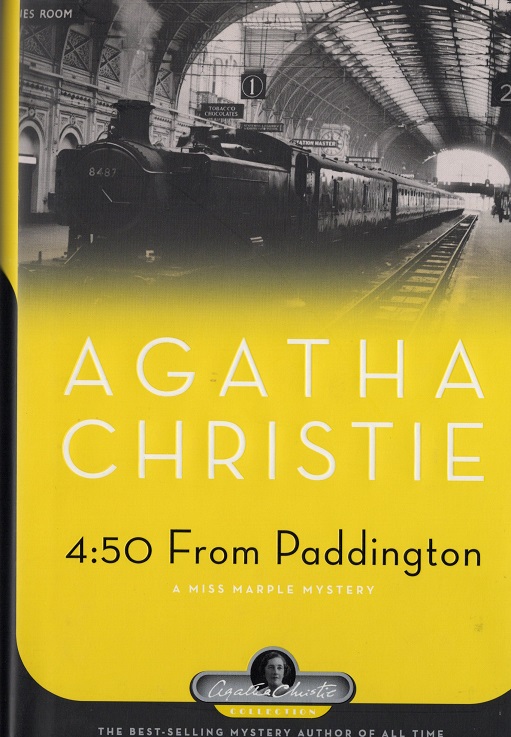
Hickory Dickory Dock
Book Description
Time ticks ominously as a chilling murder disrupts the calm of a quaint boarding house. Secrets lurk behind every door, and hidden alliances come to light as detective Hercule Poirot races against the clock to uncover the truth. Tension escalates when each resident becomes a suspect, their façades crumbling under the weight of suspicion. Relationships fracture, and paranoia thickens the air. With every tick of the clock, the body count rises, and the stakes soar. How far will one go to protect a dark secret? As the clock strikes, will Poirot unravel the mystery, or will the killer escape justice once more?
Quick Book Summary
In Agatha Christie’s "Hickory Dickory Dock," the renowned detective Hercule Poirot tackles a perplexing case after a series of thefts at a London student hostel quickly escalate into brutal murder. When Mrs. Hubbard, the vigilant house matron, brings Poirot into the investigation, he finds himself amidst an eclectic mix of international residents, each hiding secrets. As Poirot methodically interviews the suspects, more mysterious events unfold—a poisoning, attacks, and a tangled web of deceit. The close-knit community turns toxic with suspicion, as the detective patiently peels away alibis and motivations. Ultimately, Poirot’s keen intellect reveals both the killer and the complex motives behind the crimes, exploring the dark lengths some will go to conceal the truth.
Summary of Key Ideas
Table of Contents
Secrets and Facades Within Community
The story centers on a seemingly innocuous boarding house for students in London, managed by the conscientious Mrs. Hubbard. The setting is lively, diverse, and fraught with the tensions of communal living. Early incidents of petty theft seem trivial at first but highlight how distrust can quickly infect shared spaces. Poirot is drawn in by Mrs. Hubbard’s concern, and his presence unsettles the residents, each of whom reacts differently to suspicion and scrutiny. The thefts act as a catalyst, exposing multiple layers of secrets and revealing that not all is as it seems behind the hostel’s closed doors.
The Unraveling of Identity and Motive
As the investigation unfolds, Poirot meticulously assembles facts and observes the students’ interactions. Beneath the surface camaraderie, he identifies hidden grievances, rivalries, and unexplained relationships among the residents. Poirot’s careful questioning and psychological insight expose contradictions in the tenants’ stories. The narrative shifts dramatically when one of the residents is found murdered, upending the group’s sense of security and escalating their fear. This death transforms what initially appeared to be a minor case of kleptomania into a lethal battle of wits between Poirot and a cunning adversary.
Poirot’s Methodical Investigation
Fear and paranoia poison the environment, fracturing friendships and alliances. Every resident becomes a potential suspect—no one’s alibi is airtight, and everyone starts to doubt one another. Christie deftly explores how suspicion can warp perception and undermine trust. Poirot recognizes the subtle clues masked by hysteria, linking the crime to larger, more sinister undertakings. Subsequent attacks and another shocking death create mounting urgency and raise personal stakes for everyone inside the boarding house.
The Impact of Fear and Suspicion
Poirot’s investigation reveals that the roots of the mystery reach further back, drawing in international intrigue and old criminal ties. The detective’s trademark methodology—his reliance on psychology, attention to detail, and understanding of human nature—ultimately unmasks both the killer and the elaborate cover-up. True identities and nefarious motives are laid bare, demonstrating how individuals can be driven to desperate actions by their pasts. Poirot synthesizes the evidence to reconstruct the sequence of events, brilliantly revealing how each clue fits into the larger puzzle.
Justice and its Moral Complexity
The novel closes with Poirot not just solving the mystery, but also offering insight into the ambiguous morality of justice. The resolution underscores Christie’s fascination with human psychology, the consequences of secrecy, and how the pursuit of personal redemption or survival can have tragic repercussions. The story leaves readers reflecting on the destructive power of secrets and the challenge of truly knowing those with whom we share our lives, even within the most seemingly ordinary communities.
Download This Summary
Get a free PDF of this summary instantly — no email required.





